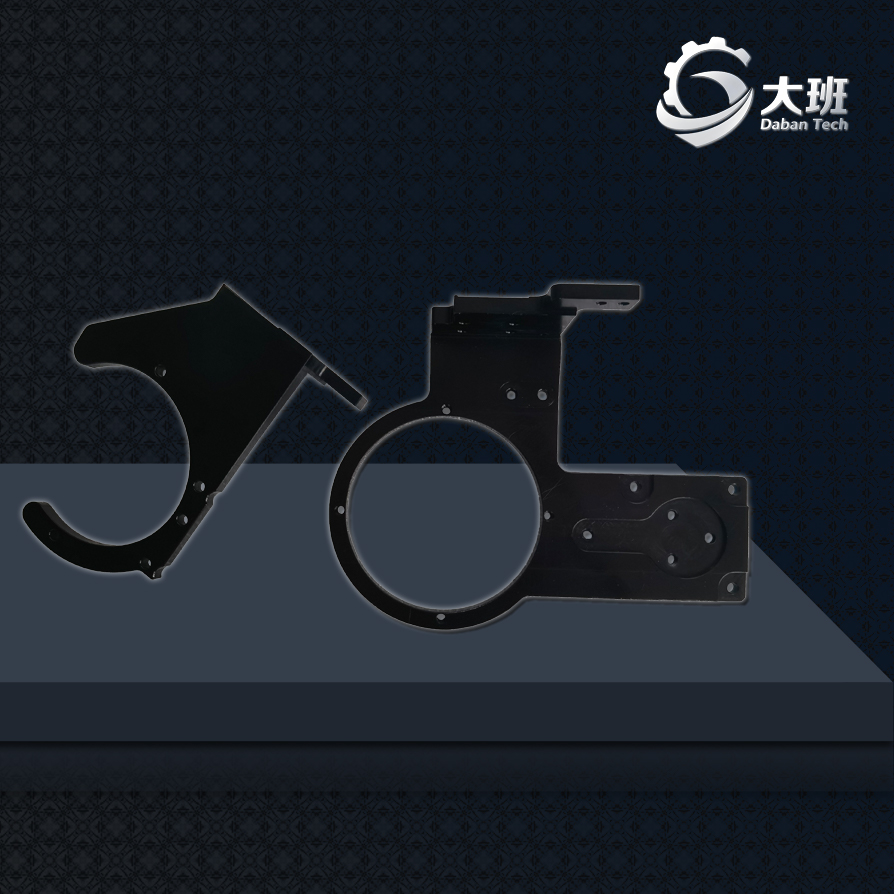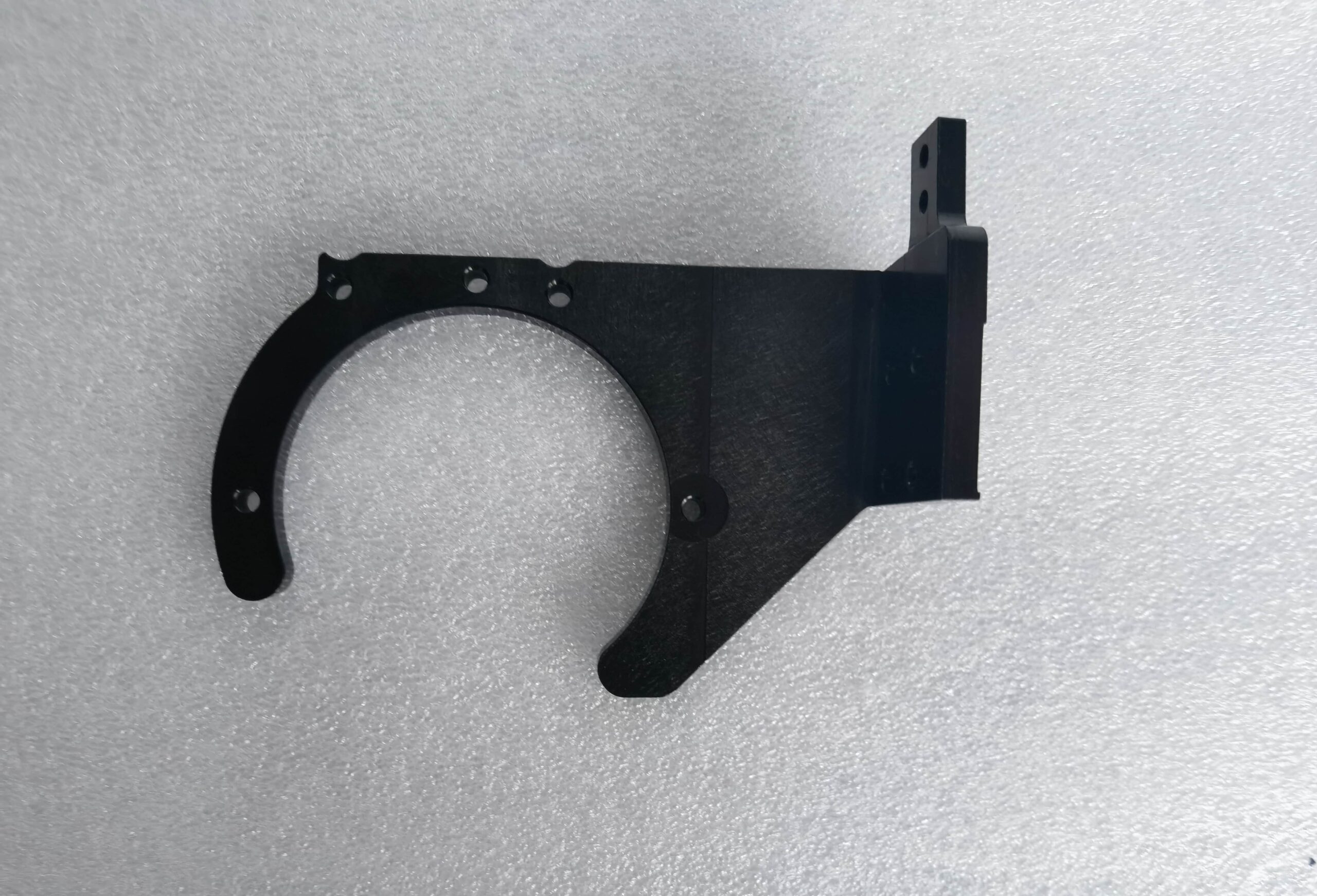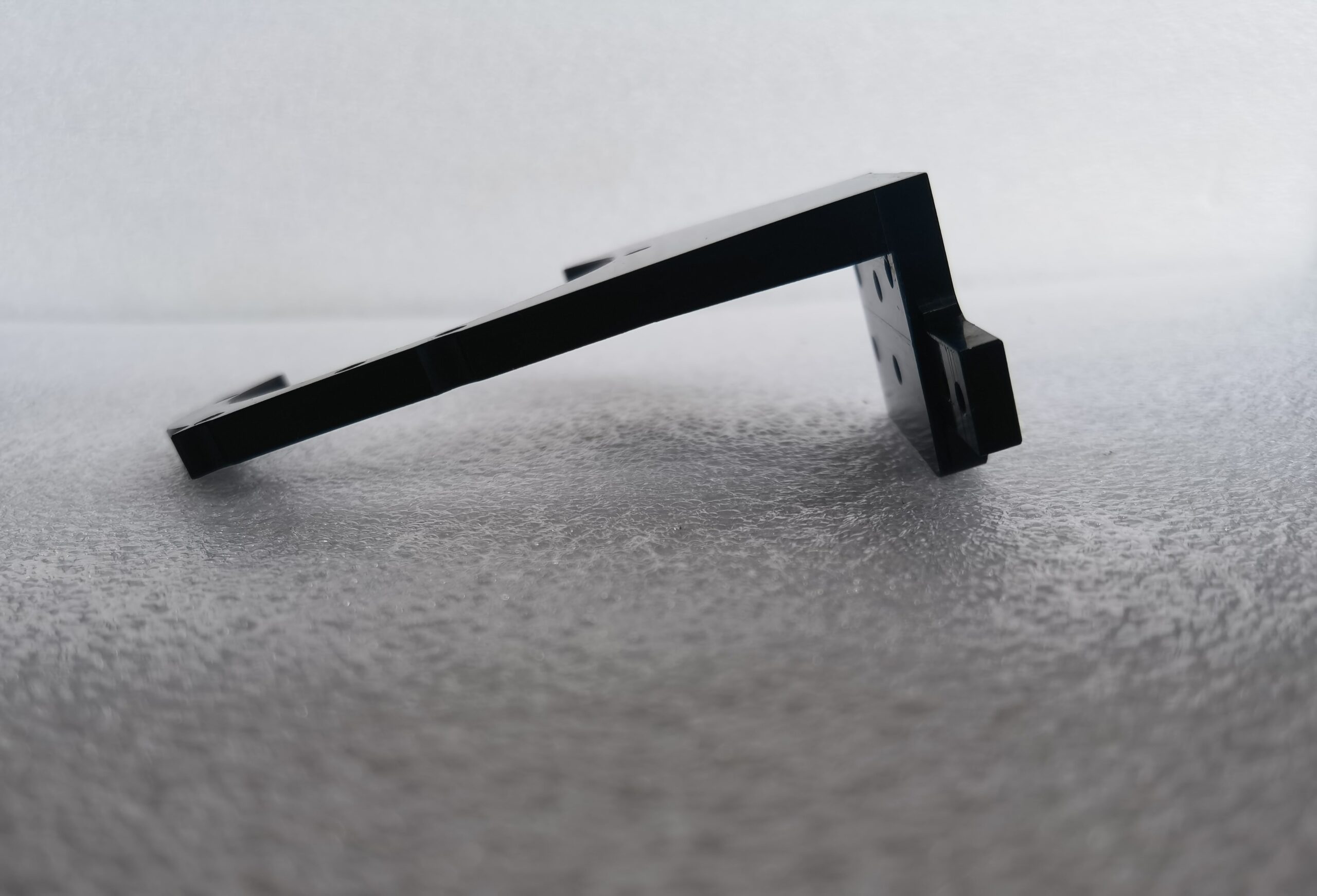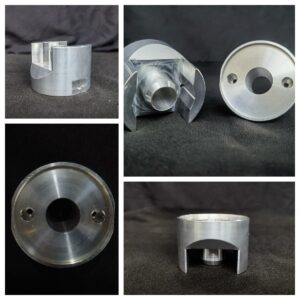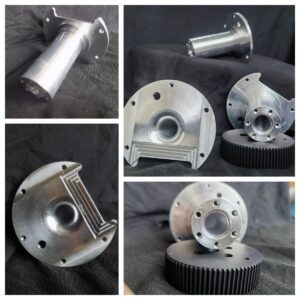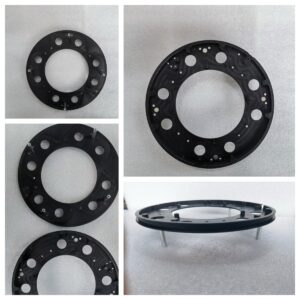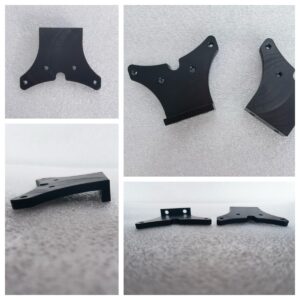The machining process for lens brackets involves a series of precision manufacturing steps to ensure the final component meets the high standards required for optical applications. Below is a typical workflow:
1. Design & Drawing Preparation
CAD models and detailed engineering drawings are created based on lens specifications. All dimensions and tolerances are strictly defined to ensure proper fit and alignment in optical systems.
2. Material Selection
Materials are chosen based on application needs such as strength, corrosion resistance, and weight. Common materials include aluminum alloys, stainless steel, and engineering plastics.
3. Material Cutting
Raw materials are cut into rough shapes using band saws, laser cutters, or waterjet machines, depending on the thickness and material type.
4. Rough Machining
CNC milling or turning is used to remove excess material and shape the basic geometry of the bracket.
5. Precision Machining
Final dimensions and surface finishes are achieved through high-precision CNC operations and grinding, ensuring accurate lens alignment and smooth surfaces.
6. Drilling & Tapping
Holes are drilled and tapped as required for mounting screws or alignment pins, ensuring compatibility with optical assemblies.
7. Surface Treatment
The machined bracket undergoes surface treatment such as anodizing, powder coating, or plating, which improves corrosion resistance and aesthetic appearance.
8. Quality Inspection
A thorough quality check is performed to verify all dimensional tolerances, surface finish, hole placement, and overall structural integrity.
9. Assembly & Testing
The lens is installed into the bracket, and functional testing is carried out to confirm correct alignment and mechanical stability during use.
This process ensures that each lens bracket is not only mechanically robust, but also optimized for high-precision optical performance.







